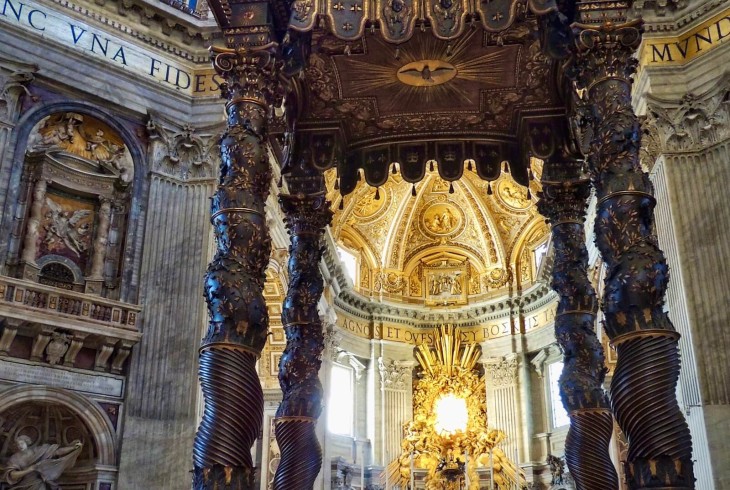The year 2025 will mark the 27th Holy Year, or Jubilee, to be celebrated in the Catholic Church. Millions of pilgrims and visitors will descend on Rome throughout the year to pay homage at the city’s churches, shrines and places of worship. It’s a great time to visit Rome, but before finalizing your travel plans why not learn all about the origins and history of the concept of the Jubilee with our guide?
What is a Jubilee?

Occurring every 25 years, the Jubilee is a year-long period of special significance for Catholics across the globe. The concept of a Holy Year has deep roots in the history of the Catholic Church, and is centered around pilgrimage to Rome, spiritual renewal and the forgiveness of sins. This tradition originated in ancient Jewish custom and was revived for Christian communities in the Middle Ages by Pope Boniface VIII in 1300. Since then the Holy Year has become one of the most anticipated events in the Catholic calendar. For the 2025 Jubilee, it’s thought that an incredible 30 million people will visit the Eternal City to take part in the celebrations.
Origins of the Jubilee: Jewish Roots

The idea of the Jubilee originates from the Old Testament, and the practice is described in the Book of Leviticus. In ancient Jewish law, a Jubilee year was declared every 50 years. During the Holy Year, debts were to be forgiven, certain types of slaves freed, and land that had been sold was returned to its original owners in recognition of the fact that all property ultimately belongs to God. The Jubilee was announced by the sounding of a goat’s horn, known as a shofar or yōbēl in Hebrew - over time this word morphed into our modern term jubilee.
The First Roman Jubilee: Boniface VIII and the Holy Year of 1300
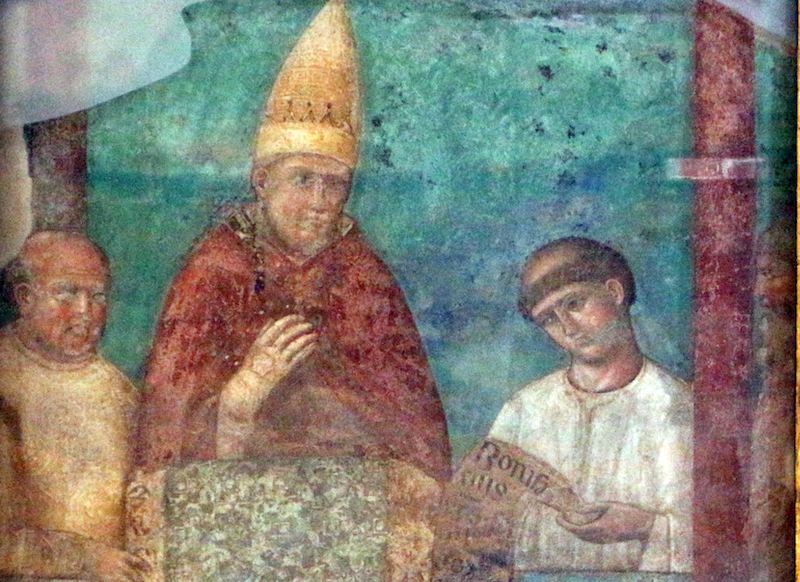
The first Catholic jubilee didn’t take place until the year 1300, and according to contemporary accounts began as a spontaneous outpouring of religious devotion. The upcoming turn of the century was considered by many to be a time freighted with spiritual significance, apocalyptic portents and nervous anticipation, and travelers from across Europe poured into Rome in the closing days of 1299.
Pilgrims congregated in St. Peter’s Square on Christmas Eve (the new year was marked by Christmas Day during this period), and rumors swirled that the Pope was preparing to grant a widespread remission of sins for the gathered faithful. In reality, Pope Boniface VIII had intended no such thing; but seeing the crowds flocking to the center of Christendom, he decided to adopt the idea.
Turning to Biblical precedent, the pontiff resolved to revive the ancient Hebrew idea of a Holy Year, and published the Papal Bull “Antiquorum fida relatio” on February 22, 1300. The Bull declared that pilgrims who traveled to Rome during the remainder of the year were to be granted pardon from their sins (a so-called plenary indulgence) on condition that they visit both the basilica of St. Peter and that of St. Paul for 15 days in succession. Locals weren’t left out, either. Roman residents were entitled to the plenary indulgence as well, so long as they visited the basilicas for 30 days in a row.
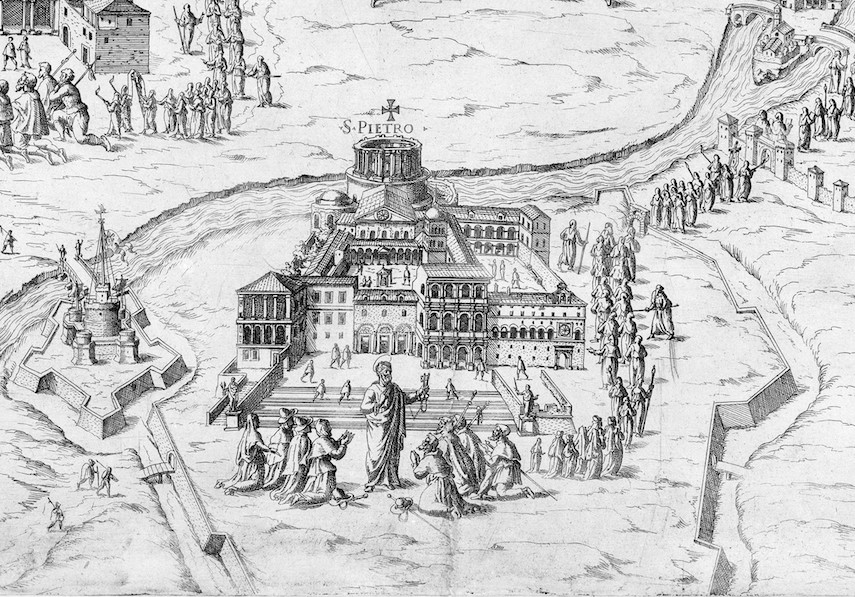
It seems that Boniface’s motivations for declaring the Jubilee were as much economic as they were spiritual; a savvy operator, the pope realized that an influx of pilgrims would be good news for the papal coffers, and so it proved. According to one account, two clerks were stationed outside St. Paul’s Basilica day and night for the entire year, armed with massive rakes to collect the ceaseless flow of coins left by the pilgrims.
Contemporary chroniclers recount that 2 million pilgrims visited Rome over the course of the year, an incredible number when you consider the hazards and difficulties of travel in the Middle Ages. Amongst the famous figures to make the journey, we know that Giotto and Dante attended the first Jubilee.
A fresco by Giotto depicting Boniface proclaiming the Jubilee survives in the church of San Giovanni in Laterano, while Dante mentions the Jubilee of 1300 in the Divine Comedy, describing hordes of pilgrims rushing across the Bridge of Angels on their way to the Vatican. Such was the influx of visitors, the bridge was divided into two lanes according to a one-way system: one for arriving pilgrims and one for those departing!
Evolution of the Jubilee: Subsequent Holy Years
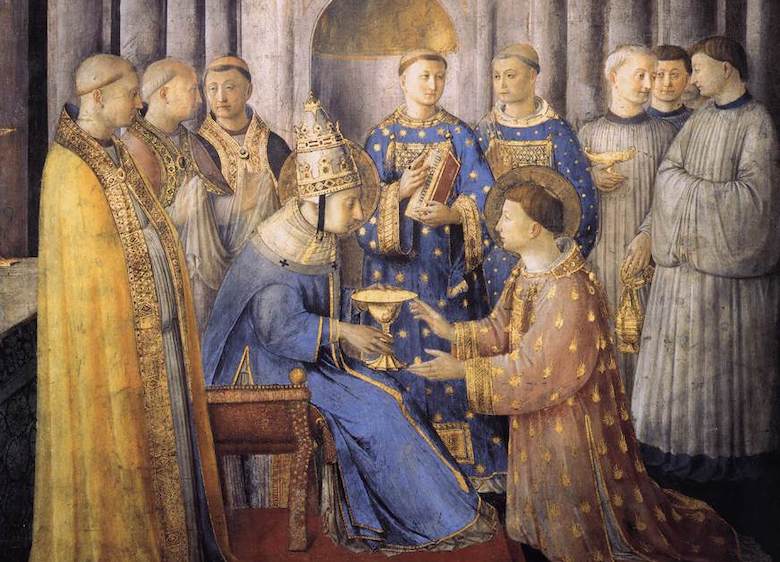
Following the unqualified success of the 1300 Jubilee, subsequent popes continued the tradition, although the frequency and conditions of the Holy Year varied. Boniface had decreed that the Jubilee was to be celebrated every 100 years at the turn of each century, but in practice the potential proceeds of the Holy Years was so great that various popes couldn’t resist shortening the interval between them.
Despite being exiled in Avignon in southern France, Pope Clement VI was convinced by a delegation of Roman nobles to declare the next jubilee in 1350, and dispatched one Cardinal Gaetani Ceccano to preside over the event. To facilitate the safe passage of the millions of pilgrims wishing to make the journey, the pope succeeded in negotiating a truce in the bitter ongoing war between France and England. In addition to visits to Saint Peter’s and Saint Paul’s, to gain their plenary indulgence this time pilgrims would also have to visit the basilica of San Giovanni in Laterano.
Pope Urban VI further reduced the interval to 33 years, to symbolize the number of years that Jesus spent on earth. Urban added the Basilica of Santa Maria Maggiore to the roster of churches pilgrims needed to visit in order to obtain their indulgence. Still later, Pope Paul II in 1470 established the current practice of celebrating the Jubilee every 25 years.
How Did the Jubilee Affect Rome?
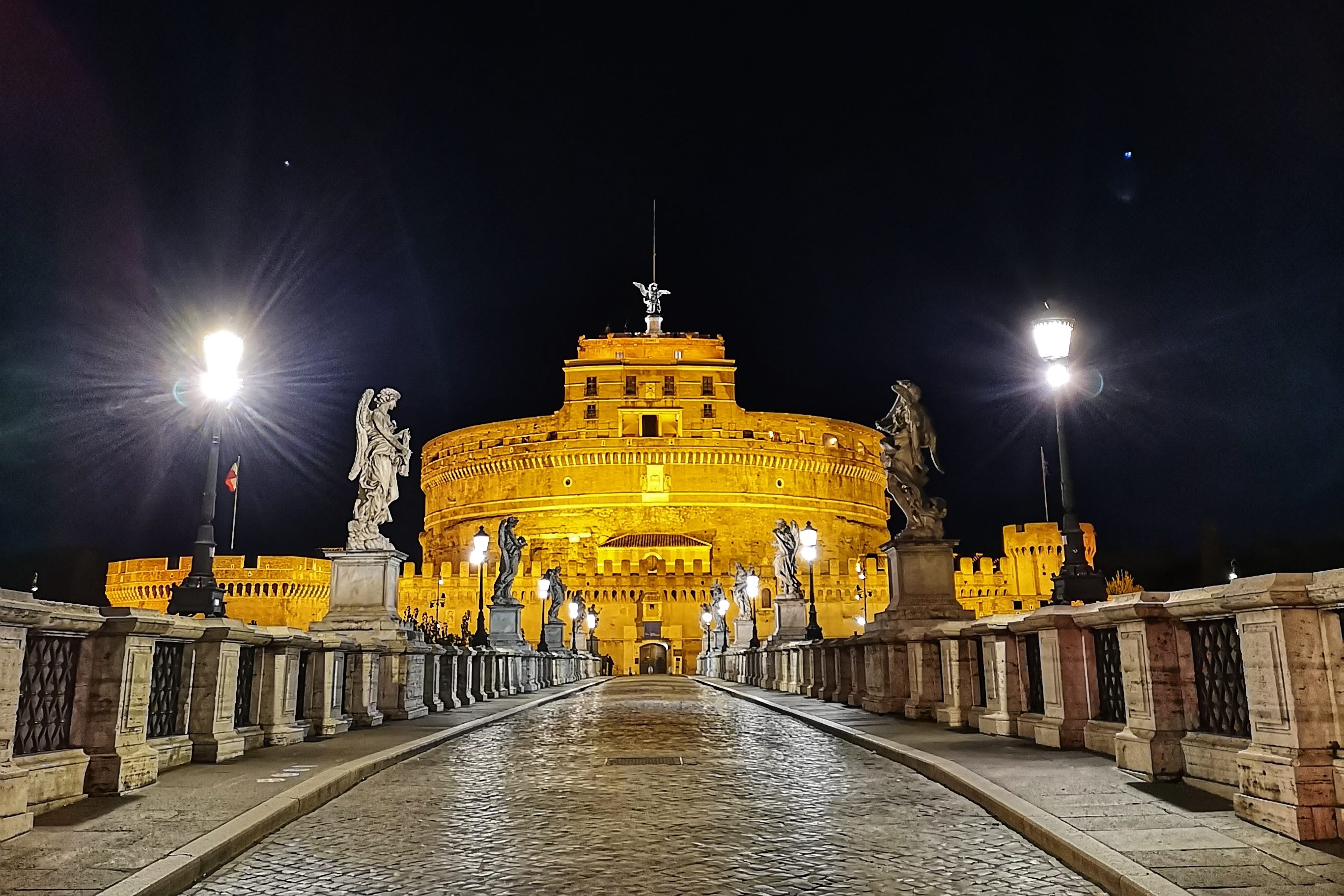
Throughout the early modern period, the massive funds brought in by jubilees were used to renovate and restore the often crumbling infrastructure of the city, which was inadequate for the masses of visitors descending on the city. Before the 1450 Jubilee, Pope Nicolas V commissioned one of the largest building campaigns in Rome seen since the days of the ancient empire, overseen by the renowned Renaissance architect Leon Battista Alberti. Not to be outdone, Pope Sixtus IV commissioned the building and decoration of the Sistine Chapel in the Vatican to mark the 1475 Jubilee.
Since then, Jubilee years have provided a continuing opportunity for Popes to make their mark on the urban fabric of the Eternal City, and this year is no different. In anticipation of the upcoming Jubilee of 2025, landmarks across Rome are being restored and cleaned to ensure they will look their best for the coming year. Bernini’s Fountain of the Four Rivers in Piazza Navona, the Pantheon fountain and the Baldachin in St. Peter’s Basilica are just a few of the famous monuments currently under restoration but which should be visible again towards the end of this year.
What are Extraordinary Jubilees?

In addition to the regular Jubilees, the Catholic Church has occasionally proclaimed Extraordinary Jubilees, which are not tied to the 25-year cycle but are called for specific reasons. One was celebrated in 1933, for example, to mark the 1,900th anniversary of Christ’s resurrection. The most recent example was the Jubilee of Mercy declared by Pope Francis in 2015 - 2016. Another extraordinary Jubilee is planned for the year 2033, to commemorate the 2,000-year anniversary of Christ’s death.
For 25 years, Through Eternity have been organizing itineraries showcasing the best of Rome led by our resident expert guides. If you're planning a visit to the Eternal City during the Jubilee, be sure to get in touch to help plan your perfect trip. For everything you need to know about visiting Rome during the Jubilee, check out our dedicated Jubilee travel guide here.
MORE GREAT CONTENT FROM THE BLOG:
- Everything you Need to Know About Visiting Rome
- A Guide to the Jubilee of 2025 in Rome
- Top Things to See in Santa Maria Maggiore
- The Wonders of San Giovanni in Laterano
- 6 Most Ancient Churches in Rome
- How to visit the Colosseum in 2024: Tickets, Hours, and More
- 7 Things you Need to Know About the Trevi Fountain
- Visiting the Vatican Museums and St. Peter's Basilica: The Complete Guide
- 9 Things You Need to Know About the Pantheon in Rome
- 5 Reasons to Explore Italy with Through Eternity
- The Best Catacombs to Visit in Rome
